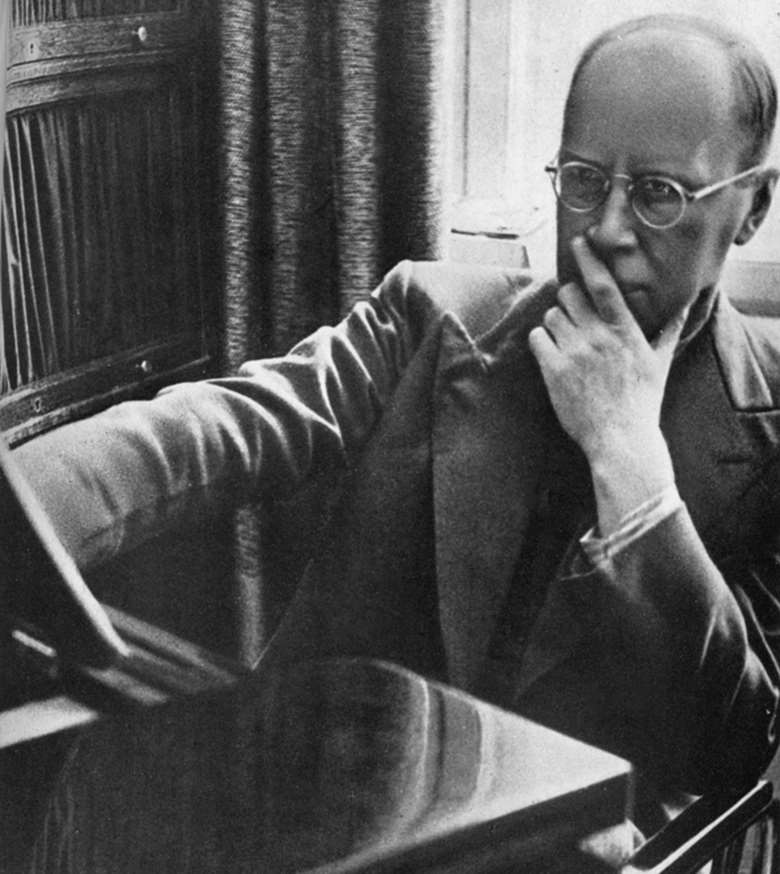Inside Prokofiev's Piano Sonatas
Gramophone
Tuesday, January 5, 2016
Amanda Holloway talks to Peter Donohoe about Prokofiev’s 'explosion of virtuosity'

Peter Donohoe is loath to be pigeonholed, but his life is inextricably linked to the music of Prokofiev. It was with the First Piano Sonata, among other works, that he gained an ARCM diploma at the age of 17; Sonata No 6 was part of his winning programme at the 1982 Tchaikovsky Competition in Moscow and his 1991 recording for EMI of Sonatas Nos 6-8 remains a benchmark.
On a personal level, Donohoe has always been fascinated by the culture of the Soviet Union and the composers working within that system. ‘My father inspired me to take an interest in the Cold War and the conflict between the East and the West. My own personality, at least when I was younger, was in tune with personalities such as Prokofiev and Stravinsky.’ He tells me that he was born exactly two months after the funerals of both Stalin and Prokofiev, and when he performs in the former Soviet Union, people ask him: ‘Mr Donohoe, which are you – Stalin or Prokofiev?’ You can guess his reply.
Donohoe believes that these sonatas form one of the greatest piano solo cycles in the repertoire. ‘Prokofiev was creating these major works throughout his career – all of them are major and some are still underrated. I am delighted to be recording the complete cycle at last.’
He has brought along his Boosey & Hawkes edition of the nine sonatas, published in 1985 with an introduction by Donohoe himself. ‘In the 1980s I was already heavily involved in playing this music. Since then I’ve changed my mind about these pieces, as you’ll see from my notes for the new recordings.’ We turn to the delightful First Sonata, written when Prokofiev was a student. ‘It’s very romantic and tonal; you could easily mistake it for Glazunov or Rimsky-Korsakov. It’s full of melodies like this, the first theme – [he sings it quietly to the hotel coffee shop] – it’s very nice to listen too, not at all acerbic.’
How does Donohoe give sufficient gravitas to a student work that is also the opening statement of the whole cycle? ‘You play it for what it is. When something displays its slight naivety – a theme that’s nine chords with no rhythmic variation to it at all – one’s natural inclination is to play with rubato. Even though people think you mustn’t do rubato because it’s Prokofiev, the music demands it.
‘In the development there is one passage that could actually be Tchaikovsky. It’s florid piano-writing but the overall effect is harmonic: typical Russian Romantic use of sequences, where you simply shift the pattern and repeat it with different harmonies. It’s the shifts that make it intense and give the music its sense of direction, exactly as in Tchaikovsky’s Fourth Symphony.
‘Then straight away you come to the traditional problem of great Romantic music; it’s very exciting and it intensifies with each repetition of the sequence. One of the biggest dangers for the performer is getting excited. You mustn’t get out of control emotionally as you are playing. It’s very hard to play, technically. Then you reach a typical Romantic climax resolving on to a major key (I see I’ve written rallentando), and when you get to that point you have to make sure you don’t blow it. It remains up there for the next few lines, then there’s this huge, dissonant climax on a minor ninth, then a subito pianissimo.’ And then, on his recording, there’s a heart-stopping silence. ‘Do you think the pause is too long?’ he asks. No, it’s devastatingly effective.
We barely have time to turn to the Third Sonata, ‘an explosion of virtuosity on the part of the composer and for the performer as well,’ says Donohoe. ‘When you consider the acerbity of this first section and the virtuosity required for that – it really is very, very hard to play.’
Listening to this new recording, you don’t doubt him for a moment. Donohoe is in his element.
The historical view
Anna Yesipova – Sergey Prokofiev Diaries 1907-14: Prodigious Youth (ed Anthony Phillips, 2006)
Prokofiev’s revered teacher, Anna Yesipova, invited him to play his new First Sonata. ‘Very interesting music,’ she said, ‘but I would like to hear it played by someone other than yourself…you constantly over-pedal. Leave it with me and I will put in the pedal markings.’
Arthur Rubinstein – Arthur Rubinstein: A Life (Harvey Sachs, 1995)
Arthur Rubinstein, who met Prokofiev in New York, championed the younger man’s music but he didn’t play the sonatas himself. ‘I was too lazy to learn them sufficiently for a public performance but I read them at home, played them often in my head with great perfection and remained satisfied with that.’
Sviatoslav Richter – Sviatoslav Richter: Notebooks and Conversations (Bruno Monsaingeon, 2002)
‘Prokofiev had been invited…He had brought his Sixth Sonata…Even before he had finished playing, I had already decided that I would play this sonata…The remarkable stylistic clarity and the structural perfection of the music amazed me. I had never heard anything like it.’
More on Prokofiev...
Feature Prokofiev's Peter and the Wolf – which recording is best?
Feature Inside Prokofiev's Seventh Symphony
Review Prokofiev's Piano Sonatas Nos 1-5 – Peter Donohoe
This article originally appeared in the May 2013 issue of Gramophone.







